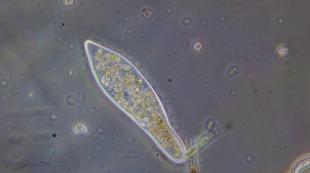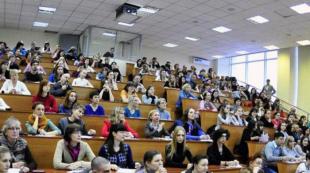Million-plus cities - how many are there in Russia and in the world? In which cities is it easy for millionaires to breathe, start a family and build a career
Million-plus cities (or millionaires) are cities with a population exceeding one million inhabitants. How many such cities are within our country? And what are these cities? Our article will tell about it.
Million-plus cities of the world and their geography
The population of our planet is growing rapidly. And if a couple of centuries ago the cities had only a few thousand inhabitants, today the population of many of them is already hundreds of thousands. And some cities have already received the status of "millionaires". This means that at least one million people live in them. An unimaginably huge number!
According to historical documents, the first city on the planet to reach the mark of one million inhabitants was ancient Rome. It happened at the very beginning of our era. However, already in the 5th century the city lost this status. Baghdad and the Chinese city of Xi'an also became millionaire cities in the first millennium. If you believe other sources, then it is quite possible that by the end of the first millennium there were several more Chinese cities with millionaires.
The population of our planet began to grow rapidly in the twentieth century. And if in the middle of the 19th century all the million-plus cities of the world could be counted on the fingers of one hand, then in 1980 there were already more than two hundred of them! Which countries have the most such cities? And how many million-plus cities are there today in Russia?
Today, according to various estimates, there are from 300 to 500 such cities on the planet. It is worth noting that million-plus cities are placed on the world map extremely unevenly. Thus, the absolute leaders in their number are: China (from 53 to 61 according to various estimates) and India (54 cities). And this is not at all surprising, because approximately one billion (!) people live in these countries. Next in the ranking are: Brazil, Russia, Indonesia, Japan and Nigeria.
So how many million-plus cities are there in Russia? More on this later in our article.
List of million-plus cities in Russia
As of the beginning of 2015, there are 15 such cities in Russia. Here is a list of all these settlements, arranged in descending order of population (the number of inhabitants is indicated as of the beginning of 2014):
- Moscow (over 12 million people).
- Yekaterinburg (1.41 million).
- Nizhny Novgorod (1.26 million).
- Kazan (1.19 million).
- Samara (1.17 million).
- Chelyabinsk (1.16 million).
- Omsk (1.16 million).
- Rostov-on-Don (1.11 million).
- Ufa (1.10 million).
- Krasnoyarsk (1.04 million).
- Perm (1.03 million).
- Volgograd (1.03 million).
- Voronezh (1.01 million).
Two more cities in Russia - Saratov and Krasnodar - are a little short of the mark of one million inhabitants.
It is interesting to note that on the territory of Russia, million-plus cities are also located very unevenly. Most of them are located within the European part of the country. If we take into account the economic zoning of Russia, then the maximum number of millionaire cities is in the Urals economic region.

About 20% of the total population of the Russian Federation lives in all of the above cities.
The value of million-plus cities
Million-plus cities serve as strongholds on the basis of which the socio-economic framework of any territory or state is formed. They are powerful engines of the country's economic development.
Millionaire cities, as a rule, act as important industrial, cultural and scientific centers that attract the best human resources. It is curious that in Soviet times a million-plus city had a number of privileges over other settlements. In particular, he received the right to build a subway at his place.
Moscow is a multi-millionaire city of Russia
The largest metropolis on the planet reached the milestone of one million people at the end of the century before last (in 1897, to be more precise). However, until the 1920s, Moscow was still inferior in terms of population to St. Petersburg. Only the reverse transfer of the Russian capital to Moscow helped to correct this situation.

In the second half of the last century, the growth rate of the population of Moscow amounted to approximately one million people in ten years. An interesting picture was observed in the post-Soviet era (and continues to be observed now), when the population of Moscow grew steadily, despite the overall negative population growth rates across the country. Today, over 12 million people already live within the city, and Moscow itself continues to grow in breadth.
St. Petersburg is the second most populated city in Russia
St. Petersburg crossed the mark of one million inhabitants a little earlier than Moscow did - in 1890. After that, the dynamics of the population of the city was characterized by very strong jumps, which is explained, first of all, by the First World War, the Civil and Great Patriotic Wars.

In 1988, the historical maximum of the population of St. Petersburg (over 5 million people) was recorded, after which the city's population began to decline. And only in 2012 the city again overcame the mark of five million inhabitants.
Finally...
Now you know how many million-plus cities there are in our country. There are 15 of them in total. There are several hundred million-plus cities on the planet, and they are located extremely unevenly. So, most of them are located in two countries of the world - in India and China.
In any large state there are cities with a million inhabitants - a territorial unit, the number and population of which exceeds 1 million people. For the state, such settlements are the main places of attraction for cultural, industrial, labor and simply human resources. Typically, such cities can rightfully be called the largest socio-economic centers of the entire nearby region. But what are the advantages of such a neighborhood. First of all, this is the population, while the second is the level of income of the local population. In such places, a considerable historical and cultural potential is concentrated, as well as a large number of educational institutions, large-scale factories and large investment centers.
Cities with a population of over one million in Russia in 2017
If we approach the noted issue from the side of statistics, then from 2012 to the present moment it is possible  publicize some pretty important information. According to the results of the last census, we can say with a 100% guarantee that there are 15 Russian cities, the population of which in 2017 will exceed 1 million people.
publicize some pretty important information. According to the results of the last census, we can say with a 100% guarantee that there are 15 Russian cities, the population of which in 2017 will exceed 1 million people.
1. Moscow is the capital of Russia. The total number of citizens of this settlement at the moment is 12.3 million people. Of course, this is the largest city in the entire federation.
2. St. Petersburg is the royal capital of the Russian state. As of 2016, the total number of people living in the city reached 5.2 million people.
3. Novosibirsk is the best place in the Siberian hinterland. As of January 1, 2016, the number of people living in the city is 1.58 million people.
4. Yekaterinburg is another well-known settlement in the Russian Federation, with a population of almost 1.48 million people.
5. Nizhny Novgorod is a city in which more than 1.27 million people already live.
6. Kazan is a city with a population of 1.22 million people.
7. Chelyabinsk is a city with a total population of 1.19 million people.
8. Omsk is a small Russian metropolis with a population of 1.78 million people.
9. Samara - in this city at the beginning of 2016, 1.7 million inhabitants were recorded.
10. Rostov-on-Don - more than 1.12 million people live in this settlement.
11. Ufa is a city with a population of 1.1 million people.
12. Krasnoyarsk - at least 1.06 million people currently live in this sunny city.
13. Perm is a city with a total population of 1.04 million people.
14. Voronezh is a small Russian town with 1.03 million people.
15. Volgograd is a city with a total of about 1.01 million people.
Of course, thanks to such a list, one can understand only one thing - there are enough millionaire cities in Russia. True, only two of them are considered the largest multimillionaires. These are Moscow and St. Petersburg, where more than 5 million citizens live. 
The economic factor of cities
If we consider each large Russian city from the point of view of the economy, in any of the regions existing in the country in 2017, one can single out their cities with certain requirements.
1. Ural direction. According to official statistics, 4 large centers can be distinguished in this district: Chelyabinsk, Yekaterinburg, Perm and Ufa.
2. Volga region. Here the largest regional centers are 3 cities.
3. West Siberian region, which includes only 2 large cities.
4. The central region of the Russian Federation with one large settlement of a millionaire.
 5. Northwestern region, which also includes only one city.
5. Northwestern region, which also includes only one city.
6. Volga-Vyatka region, which includes only one more or less dimensional settlement.
7. East Siberian and North Caucasian regions - both districts have only one city each.
8. Far East and Central Black Earth region, which also consist of 1 large city.
9. Kaliningrad region and Northern economic region. Unfortunately, there are no large cities in this direction at all.
Recall historical information
If we return to history, we can single out a sufficient number of interesting facts regarding the described sphere, which are directly related to the current cities with a population of over a million. No one denies the fact that such territorial points have special powers that distinguish them from the list of the most ordinary Russian cities. If we recall the times of the USSR, then it was in cities with a population of at least one million that it was possible to build metro stations. Also, such megacities had various public goods and distributed resources. True, the receipt of any benefits occurred only taking into account the current standards of the State Planning Commission. However, informal relations between the leaders of all regions and the central executive body were also taken into account.
Relative to the post-Soviet period, cities with a million inhabitants have always stood out among others with a special attitude from the government. Do you know why? The thing is that these settlements were and still are some large markets for most of the surrounding territories. Simply put, a place where investments from all over the country flocked, relating to the most diverse areas. 
At the moment, cities with a population of over a million in Russia are in great demand among those who want to drastically change their usual life. In 2017, the situation in this regard is unlikely to change much. At the same time, according to analysts, in the near future the list of such cities may increase significantly, as the population of the Russian Federation is constantly growing. The very same list of the largest settlements of the state with accurate statistics on the relative number of people living will help to use such information in more detailed economic calculations regarding the development of Russia.
In any large country there are cities with a population of more than one million people. They are called millionaires. They mean a lot to the state in which they are located. After all, these settlements are the center of cultural, labor, industrial, and simply human resources. There are a lot of educational institutions, large factories, historical and cultural places in cities with a million population. Many of them provide work and accommodation opportunities for people who come from Asian countries and from the countries of the former Soviet Union. The importance of million-plus cities directly depends on the number of people living in them, on their income level, on the culture and economy of neighboring regions, for which large cities are a place where you can get a good education, where culture, transport, trade, logistics, and much more are well developed. other.
Table of cities with a million population in Russia for 2019
|
Population for 2019, thousand people |
||
| Moscow | 12 506 468 | |
| Saint Petersburg | 5 351 935 | |
| Novosibirsk | 1 584 | |
| Yekaterinburg | 1 477 | |
| Nizhny Novgorod | 1 272 | |
| Kazan | 1 217 | |
| Chelyabinsk | 1 192 | |
| Omsk | 1 178 | |
| Samara | 1 171 | |
| Rostov-on-Don | 1 120 | |
| Ufa | 1 109 | |
| Krasnoyarsk | 1 067 | |
| Permian | 1 041 | |
| Voronezh | 1 032 | |
| Volgograd | 1 018 | |
| Krasnodar | since 2018 recognized city-millionaire | |
| Saratov | The population is growing |
The first cities with a million inhabitants arose in Russia at the end of the 19th century. The population census, which was conducted in the country in 1897, showed that St. Petersburg is the leader and accommodates 1 million 265 thousand people. Moscow ranked second in terms of the number of inhabitants. It numbered 1 million 39 thousand people. The situation changed already in 1967, when a couple of such large cities appeared in the country - these are Gorky (now Nizhny Novgorod) and Novosibirsk. The population of Russia was constantly increasing and in seven years there were 6 such populous cities in the country. Kuibyshev (Samara) and Sverdlovsk (Yekaterinburg) were added to the previous four. In 1979, two more cities added to the list of millionaires: Omsk and Chelyabinsk. Over the next ten years, the population of five more Russian cities (Kazan, Ufa, Perm, Volgograd, Rostov-on-Don) exceeded the one million mark, and the total number of cities with millionaires became 13.
During the post-Soviet space, in most Russian cities of "millionaires" natural population growth had a negative value. Then many of the cities lost their “title”.
Map of Russian cities with over a million population, 2019
Today, there are 348 cities with a million inhabitants worldwide. Of these, 15 belong to the Russian Federation. Two cities from this list are cities of multimillionaires - this is Moscow, which has a population of 12 million 300 thousand people, and St. Petersburg with a population of 5 million 200 thousand inhabitants.
Most of the cities in which the population exceeds 1 million are located in Siberia and the Volga region. And there are more and more such cities every year. And all this is due to the positive growth of the population of the country.
The latest population census indicates that at the beginning of 2019 in Russia, 16 cities have the status of millionaires.
The city of Krasnodar was added to the general list, the authorities of which at the beginning of 2016 announced that the number of its inhabitants exceeded the mark of 1 million 250 thousand. But estimates for the beginning of 2019 indicate that the population in the city does not exceed 943 thousand people.

List of million-plus cities in Russia for 2019
Our site gives you the opportunity to get acquainted with the list of cities in Russia, the population of which exceeds 1 million inhabitants.
- Moscow. Today, the city, which is the capital of the Russian Federation, has 12 million 300 thousand inhabitants. In terms of the number of people living in it, it is the largest city in Russia and ranks ninth in the world. Moscow is a very important state transport hub. It has 5 airports, 3 river ports and 9 railway stations.
- Saint Petersburg is a Russian city of federal significance. It has 5 million 200 thousand inhabitants. Starting from 1914 and over the next 10 years, it was called Petrograd, and then until 1991 it was renamed Leningrad. For more than two centuries, starting from 1712, it was the capital of the Russian state. This millionaire is the northernmost settlement on the entire globe. It ranks third in Europe in terms of the number of people living in it (Moscow is in the first place, and London is in the second). The city is located in the northwestern part of the Russian Federation, off the coast of the Gulf of Finland.
- Novosibirsk ranks third in the Russian Federation in terms of the number of inhabitants. It accommodates 1 million 580 thousand people. It is the largest city in all of Siberia. Trade, industry, culture, science and transport are very well developed here. Novosibirsk is located next to the reservoir, which is formed by the dam of the Novosibirsk hydroelectric power station.
- Yekaterinburg is a large administrative and scientific and educational center of the Ural region. It is home to about 1 million 480 thousand inhabitants. Yekaterinburg is one of the most equipped in the Russian Federation. It plays a special role as a major transport linguistic hub, as it houses an airport of international importance, and the Trans-Siberian Railway and six routes of national importance are laid through its territory.
- Nizhny Novgorod ranks fifth in terms of population. There are 1 million 270 thousand people on the territory of this city. It is the administrative center of the Volga region of the Russian Federation.
- Kazan is the capital of Tatarstan, in which there are about 1 million 220 thousand inhabitants. The city is considered a major river port on the Volga coast, as well as the economic, political, scientific, cultural and sports center of the Russian Federation.
- Chelyabinsk is a Russian town located in central Eurasia. It is one of the largest industrial centers in Russia. At the beginning of 2019, the number of inhabitants in it reached 1 million 192 thousand people.
- Omsk- a small metropolis in Russia, in which 1 million 183 thousand people live. It ranks second in Siberia in terms of population.
- Samara is a large Russian city with a population of about 1 million 172 thousand inhabitants. It occupies the territory on the left bank of the Volga and is considered the central economic region in the Volga region.
- Rostov-on-Don located on the banks of the Don. This is one of the largest cities in Russia, the number of inhabitants in which increased by 6 thousand people over the past year and at the beginning of 2019 amounted to 1 million 125 thousand inhabitants.
- Ufa is located a hundred kilometers from the South Urals. It is the capital of Bashkortostan, whose population has increased to 1 million 119 thousand people.
- Krasnoyarsk- a city in Siberia, whose population in 2019 grew to 1 million 85 thousand inhabitants.
- Permian occupied the territory in the eastern part of the Russian Federation. The city, according to the latest estimates, is home to about 1 million 49 thousand people.
- Voronezh is the administrative center, which is located near the Voronezh reservoir and partly on the coastal territory of the Don River. At the beginning of 2019, the number of its inhabitants amounted to more than 1 million 42 thousand people.
- Volgograd- For many, the familiar and recognizable name is Stalingrad, the Great Patriotic War is already over, and about 1 million 18 thousand people already live on the streets of the city.
- Krasnodar– in September 2018, the city was officially given the status of “millionaire”
Now there is an urgent issue of employment in large cities, the issue of employment is very relevant along with the environment. We see on the example of Beijing what the rapid industrial development of the city has led to, that only a complete shutdown of enterprises and a reduction in transport on the roads can save them from smog. In recent years, there has already been an outflow of the population from cities to villages and villages, mainly by “pensioners”, leaving their apartments to young people. But young people themselves are increasingly starting to move further from cities, especially where there are jobs in the countryside. The issue of human migration is not inextricably
The processes of urbanization throughout the 20th century have seriously changed the structure of the Russian population. The number of rural residents has significantly decreased - as of January 1, 2017, their share in the total composition is only slightly more than 25%. The ratio of citizens living in cities with a population of over one million to the total number of citizens and, accordingly, to the population of the country as a whole has changed enormously. According to Rosstat, almost 33.25 million inhabitants are officially registered in the 15 largest settlements of the Russian Federation, which is more than 22% of Russians.
Cities with a million population in Russia for 2017
In terms of the number of cities with a population of more than 1 million inhabitants, the Russian Federation confidently holds the 4th place in the world after China (119 + 4), India (54) and Brazil (17). On the heels of Russia with an indicator of 15 comes Indonesia, in which there are 14 cities with a population of over 1 million people, while the number of megacities of multimillionaires in the island state is 2.5 times more than in our country.
Top three
The list of Russian cities with a population of over a million in 2017 is confidently headed by Moscow. As of January 1, there are 12,377,205 inhabitants in the capital. It is noteworthy that the Moscow agglomeration is the northernmost in the world. The increase in the number of residents over the past year in Moscow amounted to 47 thousand people.
In second place in terms of population is Palmyra of the North - 5,279,300 people. St. Petersburg is the only one of the domestic megacities that lost the title of a millionaire in 1943-1945 due to the mass evacuation of citizens and losses during the blockade. In addition, he officially holds the palm in terms of the number of citizens among European cities that are not capital cities.

Novosibirsk closes the top three with almost 1.6 million inhabitants. The unofficial capital of Siberia demonstrates amazing population growth dynamics. The settlement, formed at the end of the 19th century, in ten years reached the status of a provincial (non-district) city with the name Novo-Nikolaevsk, and already in 1962 the birth of the millionth Novosibirsk was publicly announced. The city on the Ob is considered the coldest metropolis in the world: the average air temperature in Novosibirsk is almost zero (+0.2 °C).
Rating of the remaining dozen Russian millionaires
- Yekaterinburg is the administrative center of the Sverdlovsk region with a population of 1.43 million people. The city was lucky to get a subway in the last year of the existence of the USSR.
- Nizhny Novgorod is a million-plus city, stretching on both banks of the Oka at its confluence with the Volga. It is the largest city in the Volga region in terms of the number of inhabitants, but in modern Russian history it is highly prone to depopulation. At its peak (1989), its population reached 1.4 million people, and in 2017 - only 1.26 million.

- Kazan, the capital of Tatarstan, is also positioned on the world stage under the brand of the third capital of Russia. It is noteworthy that the multinational metropolis (115 nationalities) has approximately equal shares in the population of Russians and Tatars. The total population of Kazan has reached 1.231 million people. Demographers consider the concept of an extensive path in the formation of the Kazan agglomeration.
- Chelyabinsk is the 14th city in terms of area and the seventh in terms of population in the Russian Federation. Over the past decade, the metropolis has been steadily showing population growth. In 2016, the number of citizens increased by 6 thousand and amounted to 1.198 million. Recall that the millionth Chelyabinsk citizen was born in October of the distant 1976.
- Omsk, with a population of 1.178 million people, is the second largest city in Siberia in terms of the number of inhabitants. Almost 60% of the population of the Omsk region lives in a millionaire. The laconic name of the millionaire Omsk gave rise to several variants of ethnonyms applicable to the city dweller of the metropolis: Omich, Omets and Omchanin.
- Samara (1.169 million) is a key city in the Samara-Togliatti conurbation, which also includes four more satellite cities.
- Rostov-on-Don - 1.12 million inhabitants, and in total over 2.1 million Russians live within the boundaries of the Rostov agglomeration. The millionth resident of Rostov was born in 1987.
- Ufa is the capital of Bashkortostan with a population of 1.111 million people. The composition is unique for the administrative center of the republic: Russians - 49%, Tatars - 28%, and indigenous Bashkirs - 17.1%.
- Krasnoyarsk has recently acquired the status of a millionaire (1.067 million). A significant event was recorded by the current statistical account in April 2012. To overcome the threshold of a million inhabitants, a special program was developed in the city: in many respects, the growth was provided by the influx of emigrants. For example, the Ukrainian and Tatar diaspora make up 1% of the total number of Krasnoyarsk residents.

- Perm (1.042 million) Given the fact that the regional center became a millionaire back in 1979, the number of inhabitants has not changed significantly. The maximum figure was registered in 1989 - 1092 thousand, and in 2010 the city was briefly deprived of the title of a metropolis with a million inhabitants.
- Voronezh is the youngest of the million-plus cities. Now the number of citizens is kept at around 1033 thousand people.
- Volgograd with 1016 thousand inhabitants is recognized as the most unstable millionaire in the country. It has already left this category of cities twice and returned only due to the expansion of territorial boundaries (inclusion of suburbs into the city limits). The millionaire is proud of the longest street in Russia. The second longitudinal has a length of over 50 km.
In addition to the millionaires in the Russian Federation, a number of large cities stand out, united in a group of submillionaires. These include Krasnodar (854 thousand), Saratov (845 thousand), Tyumen (720 thousand) and Togliatti (712 thousand).
Cities of over a million people in Russia in 2017 are perhaps the most important and most important places of dispersion and attraction of human, labor, economic, industrial, cultural and many other resources. Also, do not forget that these cities can rightfully be called and considered the largest center of socio-economic development, and not only for their region and region, but also for all located near cities and towns. The question arises - what is the advantage of such a neighborhood? First of all, it is not only the population, but also a completely different level of income of the population, cultural and historical potential, as well as a place that will certainly be famous for its educational institutions, good trade, culture and many other factors and indicators that we can talk about. and the list is very long.
List of Russian cities.
If we approach the study and consideration of this issue from the point of view and from the side of current statistical accounting, then starting from 2012 and up to the present time, we can single out and name the following rather important and significant information.
Based on the results of such a census, it can be said with 100% certainty that there are 15 such cities in Russia that can rightfully bear such a title and status.
- 1. Moscow. The population, according to the census, is 12,330,000 people. Agree, this is one of the largest metropolitan areas and centers in the Russian Federation.

- 2. St. Petersburg. The population for 2016 is 5,225,000 people. Compared to Moscow, the city is almost 2 times smaller, but this does not affect its significance and importance for the whole country as a whole, since it is here that important objects are dispersed.
- 3.Novosibirsk. Here the population level is almost 1,584,000 people.
- 4. Yekaterinburg - 1,477,000 people.
- 5. Nizhny Novgorod - 1,272,000 people.
- 6. Kazan - 1,217,000 people.
- 7. Chelyabinsk - 1,192,000 people.
- 8. Omsk - 1,178,000 people.
- 9. Samara - 1,171,000 people.
- 10. Rostov-on-Don - 1,120,000 people.
- 11. Ufa - 1,109,000 people.
- 12. Krasnoyarsk - 1,067,000 people.
- 13. Perm - 1,041,000 people.
- 14. Voronezh - 1,032,000 people.
- 15. Volgograd - 1,018,000 people.
From the entire list, one can draw a completely logical and logical conclusion, according to which in our country there are only two of the largest and real cities of a multimillionaire. These are Moscow and St. Petersburg, the number of which is over 5,000,000 people.
If we consider the issue of cities from the point of view of the economic factor, then in each individual region, several cities can be identified that fully meet these requirements.
- Firstly, this is the Ural direction. In this district, according to statistics, 4 cities can be named and distinguished. This is Yekaterinburg, Chelyabinsk. Ufa, Perm.
- Secondly, the Volga economic region, which includes 3 cities.
- Thirdly, the West Siberian economic region, which includes only 2 cities.
- Fourthly, the Central region of the country with 1 millionaire city.
- Fifthly, the Northwestern economic region, which also includes only 1 city.
- Sixthly, the Volga-Vyatka region also has 1 city.
- Seventh, the North Caucasian and East Siberian region. Each of these districts has 1 city.
- Eighth, the Central Black Earth Region and the Far East Territory also include 1 city each.
- Ninth, the Northern Economic Region and the Kaliningrad Territory. There are no such cities in this direction at all.

A bit of history….
If we touch on a bit of history, then in this direction we can note and highlight a fairly large number of interesting and fascinating facts that are directly related to cities with millionaires. After all, you must admit that such a city was rightfully endowed with some features and powers that distinguished it from the general list. If we look at the times of the Soviet Union, it is from then on that cities with a population of more than a million were allowed to have and possess subways, as well as various normatively distributed resources and public goods. Although it is worth noting that the likelihood of obtaining such benefits directly depended on the standards set by the State Planning Commission, but also largely on informal relations between the heads of the respective regions and the central authorities.
As for the post-Soviet period, it can be noted that such cities were distinguished by a special attitude on the part of the government. Ask why? It's simple, since it was they who were a kind of large markets for all the surrounding adjacent territories, a place where a large number of investments were attracted, which were associated with various directions.
Today, Russian cities with a population of 2017 also enjoy great prestige and are of great importance for the economy of the whole country. Many experts and specialists say with confidence that in the coming years the list of these cities may increase due to the increase and improvement of the demographic situation in the country.









